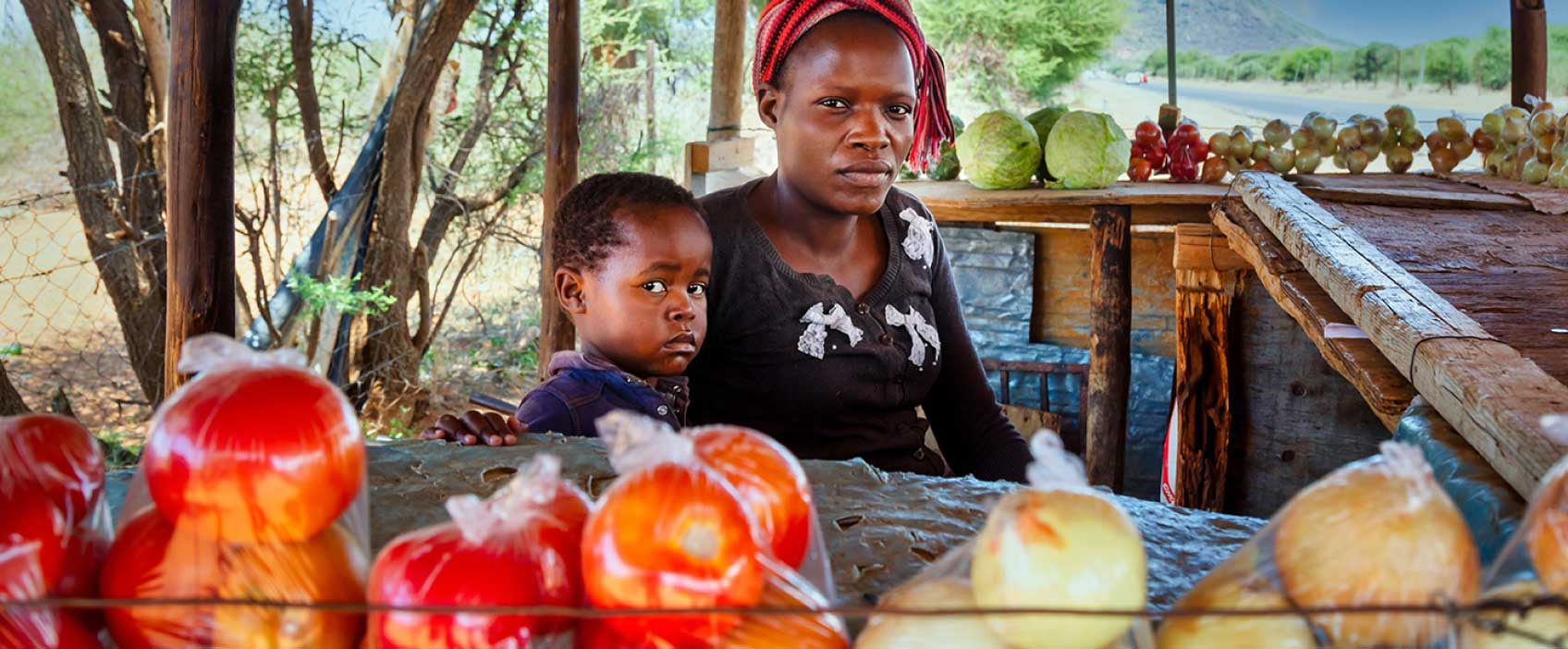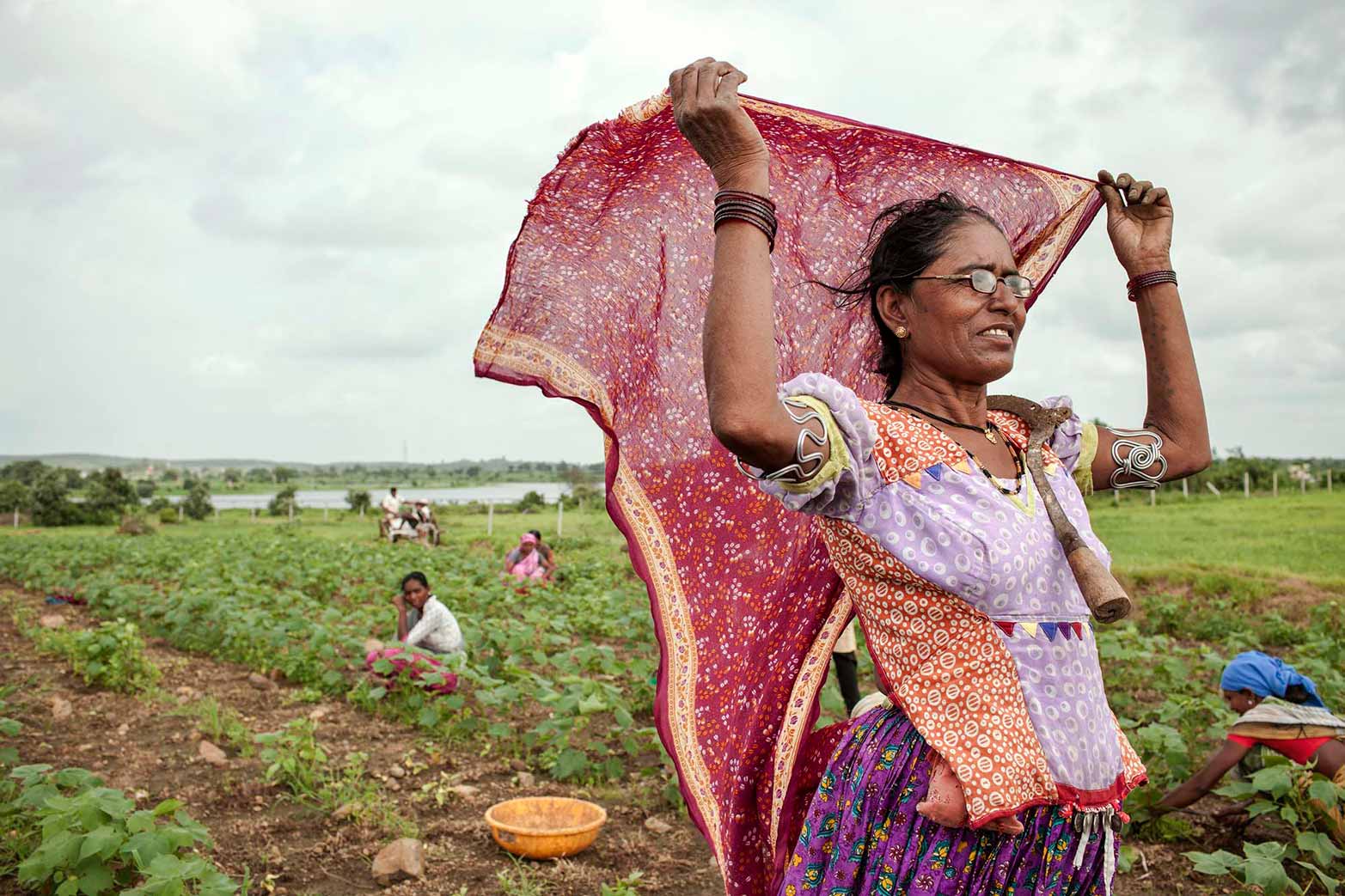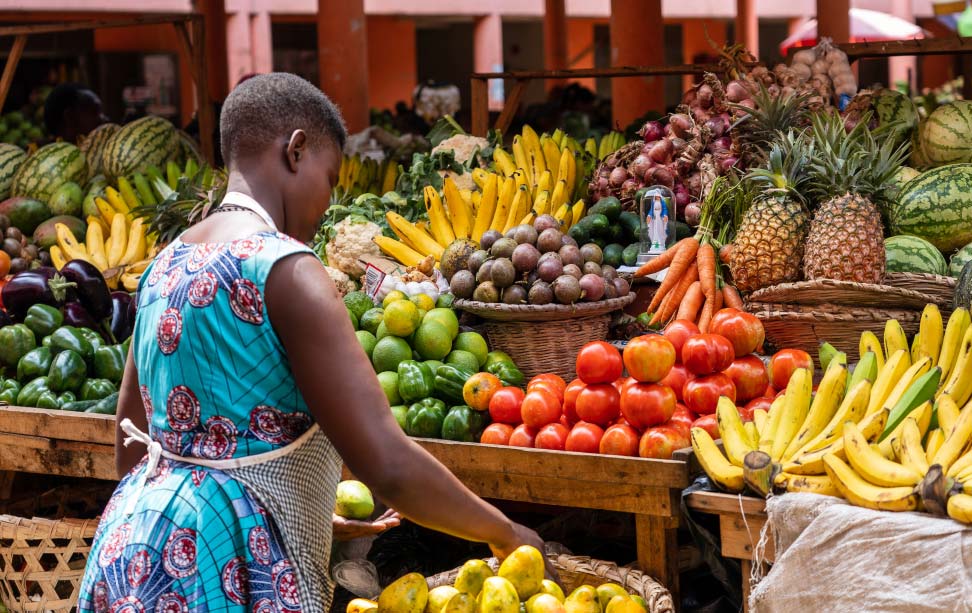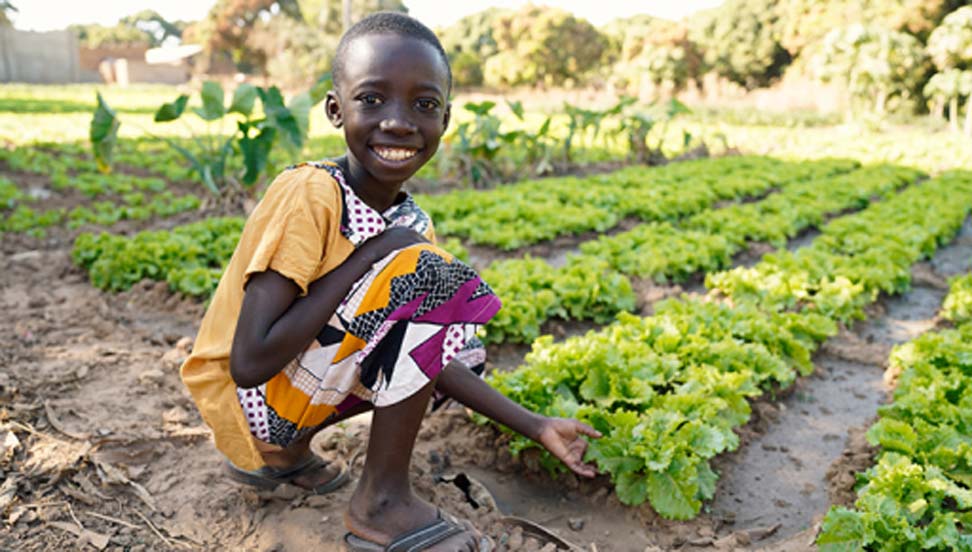
IFPRI Publications: Discussion Papers
Explore Our Latest Discussion Papers
By Title By Author By Country/Region By Keyword
Working Paper
Options for reducing greenhouse gas emissions from agriculture and food systems
Working Paper
Understanding the policy landscape for climate action in Kenya: Potential for integration of gender, nutrition, and improved impact monitoring
Working Paper
Parametric and machine learning approaches to examine yield differences between control and treatment considering outliers and statistical biases: The case of insect resistant/herbicide tolerant (IR/HT) maize in Honduras
Working Paper
Detecting cumulative effects of inputs within the flexible production function framework through LASSO shrinkage estimation: Implications for potassium fertilizer use in India
Working Paper
Business aspects along the rural-urban continuum, outlet type, and gender of ownership among MSMEs in the Vietnamese food environment
Working Paper
Guilty pleasures: Expenditure elasticities of ultra-processed foods and paid meals in India
Working Paper
Tajikistan’s agrifood system: The past performance and future opportunities and challenges
Working Paper
Under the gun: Military and paramilitary actors in Sudan’s agri-food system
Working Paper
Production and consumption traits and the adoption of improved maize varieties: Evidence from seed sample packs and cooking demonstrations
Working Paper
Household wellbeing in rural Papua New Guinea: Poverty analysis from the 2023 PNG Rural Household Survey
Working Paper
‘Gold runs through these trees’: Preferences for ecosystems payment programs in Papua New Guinea
Working Paper
Agrifood value chains in India: A state-level analysis using a social accounting matrix
Working Paper
Stakeholder disconnect: Differences between farmers, extension workers, and researchers on preferred strategies for timely wheat sowing in Bihar, India
Working Paper
Nature-positive agriculture for people and the planet: A qualitative analysis from Kenya
Working Paper
Global rice market: Current outlook and future prospects
Working Paper
The state of food insecurity measurement: A mix of methods, and a mix of messages
Working Paper
Impacts of personalized picture-based crop advisories: Experimental evidence from India and Kenya
Working Paper
Promoting adoption of sustainable land management technologies by women and couples in Ethiopia: Evidence from a randomized trial
Working Paper
Bias alleviation and value activation in citizens’ juries: Enhancing deliberation and civic engagement in sustainable food systems
Working Paper
Can role models and skills training increase women’s voice in asset selection? Experimental evidence from Odisha, India
Working Paper
Leveraging public works for sustainable and resilient livelihoods: Four case studies from India’s Mahatma Gandhi National Rural Employment Guarantee Act
Working Paper
Do public works investments in watershed rehabilitation and small-scale irrigation improve nutrition and resilience? Evidence from bureau for humanitarian assistance interventions in support of Ethiopia’s productive safety net program
Working Paper
Women’s Empowerment in Agrifood Governance (WEAGov) assessment framework insights from the India pilot study
Working Paper
Farming under fire: The interplay of armed conflict and climate-induced weather disruptions in agricultural input use
Working Paper
How agri-food value chain employment and compensation evolve with structural transformation
Working Paper
Subsidizing resilience: Evaluating Kenya’s fertilizer subsidy program amid global supply chain disruptions
Working Paper
Man vs. machine: Experimental evidence on the quality and perceptions of AI-generated research content
Working Paper
Market information and R&D investment under ambiguity: A framed artefactual experiment with plant breeding professionals
Working Paper
Why do multistakeholder processes emerge and flourish? Identifying and operationalizing the leading hypotheses
Working Paper
Consumer response to food safety risk information
Working Paper
Effectiveness of aflatoxin biocontrol: Evidence from Kenyan smallholders under varied levels of technical support
Working Paper
Impact of risk-contingent credit and traditional credit on smallholders’ agricultural investment and productivity: Experimental evidence from Kenya
Working Paper
Tajikistan’s agrifood sector review
Working Paper
What’s holding back private sector agricultural insurance?
Working Paper
Characteristics of community seed schemes for grains and legumes: Insights from northern Nigeria
Working Paper
Rainy day funds? How men and women adapt to heavy rainfall shocks and the role of cash transfers in Mali
Working Paper
Rethinking the measurement of resilience for food and nutrition security
Working Paper
Price and volatility transmission from international to domestic food and fertilizer markets in Central America
Working Paper
How can anticipatory action programming support women? Application of the reach-benefit-empower-transform framework in Nepal and Nigeria
Working Paper
A mixed-method study on gender and intrahousehold differences in food consumption from Khatlon Province, Tajikistan
Working Paper
Supply- and demand-side factors affecting maize and cowpea varietal turnover and quality seed use: Mixed-method evidence from northern Nigeria
Working Paper
Catalyzing financial inclusion: Using incentives to promote mobile money use in Ethiopia
Working Paper
Soft-skills training, locus of control, and labor market outcomes of youth: Evidence from a randomized intervention in Kenya
Working Paper
Financial inclusion, agricultural inputs use, and household food security evidence from Nigeria
Working Paper
Adapting to climate change: The case of saline tolerant seed varieties in coastal Bangladesh
Working Paper
Gendered drivers of varietal turnover: A qualitative assessment for improved teff and wheat varieties in Ethiopia
Working Paper
Challenges and opportunities in Nigeria’s home-grown school feeding program: Toward a more efficient and sustainable model
Working Paper
Impacts of an innovative credit + insurance bundle for marginalized farmers: Evidence from a cluster randomized trial in Odisha, India
Working Paper
Targeting social assistance in fragile settings: An experiment on community-based targeting
Working Paper
Irrigation schemes in Ethiopia’s Awash River Basin: An examination of physical, knowledge, and governance infrastructures
Working Paper
Systematic risk profiling: A novel approach with applications to Kenya, Rwanda, and Malawi
Working Paper
Evaluation of the programme to reduce vulnerability in coastal fishing areas in Djibouti: Qualitative findings
Working Paper
Farming for the future: Prioritization of climate-smart agriculture technologies in SAARC countries
Working Paper
Understanding the organizational approaches of funders and project implementers to strengthen women’s empowerment through agricultural collectives
Working Paper
Does nutrition-sensitive social protection build longer-term resilience? Experimental evidence from Bangladesh
Working Paper
The adoption and impact of food safety measures on smallholder dairy farmers’ economic welfare: Evidence from the Indo-Gangetic plains of India.
Working Paper
A guide to developing quantitative tools for measuring gender norms in agrifood systems
Working Paper
Varietal turnover in potato and its effect on yield: Evidence from household surveys in India
Working Paper
Modeling crop-livestock interactions in semi-subsistence economies
Working Paper
Task or time? Comparing methods for measuring the gender distribution of work
Working Paper
How do videos fit into current agricultural advisory services? Lessons from Kenya and Uganda
Working Paper
Cooperation among community leaders: The role of women’s leadership and exposure to conflict
Working Paper
Strengthening women’s empowerment, climate resilience, and nutrition along the goat value chain in Senegal: A qualitative study
Working Paper
The agricultural transformation index
Working Paper
Unlocking locally-led resilience amid conflict and climate stress: Views from community leaders in Mali on development priorities, aid distribution, and anticipatory action
Working Paper
To defer or differ: Experimental evidence on the role of cash transfers on Nigerian couples’ decision-making
Working Paper
Making the CAADP BR forward looking: A decision support tool for transforming African agrifood systems
Working Paper
The true costs of food production in Kenya and Viet Nam
Working Paper
Estimating multidimensional development resilience
Working Paper
Can farmer collectives empower women and improve their welfare? Mixed methods evidence from India
Working Paper
The unmet financial needs of intermediary firms within agri-food value chains in Uganda and Bangladesh
Working Paper
Addressing food system transformation, food security, and deforestation in Indonesia: Challenges and opportunities
Working Paper
Quality upgrading in dairy value chains: Mixed methods evidence from southwestern Uganda
Working Paper
Revisiting the demand and profitability of chemical fertilizers amid global fuel-food-fertilizer crisis: Evidence from Ethiopia
Working Paper
The effectiveness of cash and cash plus interventions on livelihoods outcomes: Evidence from a systematic review and meta-analysis
Working Paper
Farmer groups as ICT Hubs: Findings from a cluster-randomized controlled trial in Malawi
Working Paper
Two decades after Maputo, What’s in the CAADP ten percent? Determinants and effects of the composition of government agriculture expenditure in Africa
Working Paper
Barriers and facilitators to women’s participation in farmer producer organizations: A qualitative study exploring women’s empowerment and collective efficacy in Jharkhand, India
Working Paper
Buyers’ response to third-party quality certification: Theory and evidence from Ethiopian wheat traders
Working Paper
Social protection and gender: policy, practice and research
Working Paper
A network-driven data collection approach for agri-food value chains
Working Paper
Measuring land rental market participation in smallholder agriculture can survey design innovations improve land market participation statistics?
Working Paper
Measuring women’s empowerment in national surveys: Development of the Women’s Empowerment Metric for National Statistical Systems (WEMNS)
…more
Cheong, Yuk Fai; Yount, Kathryn M.; Hassan, Md. Zahidul; Hassan, Md. Imrul; Sharma, Sudhindra; Pokhrel, Pankaj; Sagastume, Mónica Dardón; Kanyanda, Shelton S. E.; Vundru, Wilbert D.; Moylan, HeatherWorking Paper
Food trade policy and food price volatility
Working Paper
Assessing the impact of rice price stabilization policies in Bangladesh: Results from a stochastic spatial equilibrium model
Working Paper
The enabling environment for large-scale food fortification in Madagascar
Working Paper
Economic valuation of ecosystem services of selected interventions in agriculture in India
Working Paper
Nutrition-sensitive agriculture diversification and dietary diversity: Panel data evidence from Tajikistan
Working Paper
Claim-making under India’s Mahatma Gandhi National Rural Employment Guarantee Act (MGNREGA): Barriers and opportunities for women’s voice and agency over asset selection
Working Paper
Role of international price and domestic inflation in triggering export restrictions on food commodities
Working Paper
A qualitative study exploring women’s empowerment in coffee cooperatives in Chiapas, Mexico
Working Paper
Farm subsidies and global agricultural productivity
Working Paper
Corporate taxes and labor market informality evidence from China
Working Paper
Assessing the vulnerability of national food security to international food price shocks: A new index
Working Paper
The economic importance of cowpea in Nigeria trends and Implications for achieving agri-food system transformation
Working Paper
Strengthening groundwater governance in Pakistan
Working Paper
Climate change and agriculture in eastern and southern Africa: An updated assessment based on the latest global climate models
Working Paper
From promises to action: Analyzing global commitments on food security and diets since 2015
Working Paper
Extreme weather and undernutrition: A critical but constructive review of the literature
Working Paper



